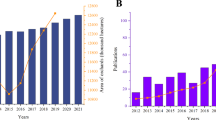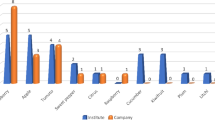Abstract
Classification and characterization of the shape of plant organs are important tools for plant biologists, breeders and growers. Here we use boundary measurements, i.e. contour morphometric data, of scanned tomato fruits in conjunction with elliptic Fourier shape modeling and Bayesian classification techniques to find the optimum number of shape categories. Our findings show that there are nine computationally and visually distinct tomato shape categories: ellipsoid, flat, heart, long, long rectangular, rectangular, round, obovoid, and oxheart. Analyses of fruits from a diverse set of tomato accessions demonstrate that some varieties carry fruits that conform to predominantly one shape category while others carry fruits that conform to multiple shape categories. In particular the categories oxheart and long rectangular feature fruit that tend to equivalently fit several categories of shape, while the flat and obovoid categories contain fruit that consistently conform exclusively to a single category. The findings show that elliptic Fourier shape modeling and Bayesian classification provide an excellent tool for further in depth analyses of fruit shape variation that may occur across varieties and/or result from growth under different environmental conditions.



Similar content being viewed by others
References
Achcar F, Camadro J-M, Mestivier D (2009) AutoClass@IJM: a powerful tool for Bayesian classification of heterogeneous data in biology. Nucl Acid Res 37:W63–W67. doi:10.1093/nar/gkp430
Bookstein FL (1982) Foundations of morphometrics. Annu Rev Ecol Syst 13:451–470. doi:10.1146/annurev.es.13.110182.002315
Borba EL, Funch RR, Ribeiro PL, Smidt EC, Silva-Pereira V (2007) Demography, and genetic and morphological variability of the endangered Sophronitis sincorana (Orchidaceae) in the Chapada Diamantina, Brazil. Plant Syst Evol 267:129–146
Brewer MT, Lang L, Fujimura K, Dujmovic N, Gray S, van der Knaap E (2006) Development of a controlled vocabulary and software application to analyze fruit shape variation in tomato and other plant species. Plant Physiol 141:15–25
Cao C (2012) Characterization of management and environment effects on cultivated tomatoes. Masters thesis. The Ohio State University. Retrieved from. http://rave.ohiolink.edu/etdc/view?acc_num=osu1352998717
Chandler GT, Crisp MD (1998) Morphometric and phylogenetic analysis of the Daviesia ulicifolia complex (Fabaceae, Mirbeliae). Plant Syst Evol 209:93–112
Cheeseman P, Stutz J. (1996). Bayesian classification (AutoClass): theory and results, from http://citeseerx.ist.psu.edu/viewdoc/summary?doi=10.1.1.44.7048
Cheverud JM (1996) Developmental integration and the evolution of pleiotropy. Am Zool 36:44–50
Cong B, Barrero LS, Tanksley SD (2008) Regulatory change in YABBY-like transcription factor led to evolution of extreme fruit size during tomato domestication. Nat Genet 40:800–804
Dryden IL, Mardia KV (1998) Statistical analysis of shape. Wiley, Chichester
Goebel J, Stutz J, Volk K, Walker H, Gerbault F, Self M, Taylor W, Cheeseman P (1989) A Bayesian classification of the IRAS LRS Atlas. Astron Astrophys 222:5–8
Gonzalo MJ, Brewer MT, Anderson C, Sullivan D, Gray S, Van der Knaap E (2009) Tomato fruit shape analysis using morphometric and morphology attributes implemented in Tomato Analyzer software program. J Am Soc Hortic Sci 134:77–87
Henderson A (2006) Traditional morphometrics in plant systematics and its role in palm systematics. Bot J Linnean Soc 151:103–111
IPGRI (1996) Descriptors for Tomato (Lycopersicon spp.). International Plant Genetic Resources Institute, Rome
Kanefsky B, Stutz J, Cheeseman P, Taylor W (1994) An improved automatic classification of a Landsat/TM Image from Kansas (FIFE). Technical report FIA-94-01, NASA Ames Research Center, Artificial Intelligence Branch
Klingenberg C, Monteiro L (2005) Distances and directions in multidimensional shape spaces: implications for morphometric applications. Syst Biol 54:678–688
Klingenberg CP, Leamy LJ, Routman EJ, Cheverud JM (2001) Genetic architecture of mandible shape in mice: effects of quantitative trait loci analyzed by geometric morphometrics. Genetics 157:785–802
Kuhl FP, Giardina CR (1982) Elliptic Fourier features of a closed contour. Computer Graphics and Image Processing 18:236–258. doi:http://dx.doi.org/10.1016/0146-664X(82)90034-X
Langlade NB, Feng X, Dransfield T, Copsey L, Hanna AI, Thebaud C, Bangham A, Hudson A, Coen E (2005) Evolution through genetically controlled allometry space. Proc Natl Acad Sci USA 102:10221–10226
Lihova J, Marhold K, Tribsch A, Stuessy TF (2004) Morphometric and AFLP re-evaluation of tetraploid Cardamine amara (Brassicaceae) in the Mediterranean. Syst Bot 29:134–146
Liu J, Van Eck J, Cong B, Tanksley SD (2002) A new class of regulatory genes underlying the cause of pear-shaped tomato fruit. Proc Natl Acad Sci USA 99:13302–13306
Munos S, Ranc N, Botton E, Berard A, Rolland S, Duffe P, Carretero Y, Le Paslier MC, Delalande C, Bouzayen M, Brunel D, Causse M (2011) Increase in tomato locule number is controlled by two single-nucleotide polymorphisms located near WUSCHEL. Plant Physiol 156:2244–2254. doi:10.1104/pp.111.173997
Paran I, van der Knaap E (2007) Genetic and molecular regulation of fruit and plant domestication traits in tomato and pepper. J Exp Bot 58:3841–3852
Perez-Perez JM, Serrano-Cartagena J, Micol JL (2002) Genetic analysis of natural variations in the architecture of Arabidopsis thaliana vegetative leaves. Genetics 162:893–915
Pickersgill B (2007) Domestication of plants in the Americas: insights from Mendelian and molecular genetics. Ann Bot 100:925–940
Rodriguez GR, Moyseenko JB, Robbins MD, Morejon NH, Francis DM, van der Knaap E (2010) Tomato Analyzer: a useful software application to collect accurate and detailed morphological and colorimetric data from two-dimensional objects. J Vis Exp 16:37
Rodriguez GR, Munos S, Anderson C, Sim SC, Michel A, Causse M, McSpadden Gardener BB, Francis D, van der Knaap E (2011) Distribution of SUN, OVATE, LC, and FAS in the tomato germplasm and the relationship to fruit shape diversity. Plant Physiol 156:275–285. doi:10.1104/pp.110.167577
Rodriguez GR, Kim HJ, van der Knaap E (2013) Mapping of two suppressors of OVATE (sov) loci in tomato. Heredity 111:256–264. doi:10.1038/hdy.2013.45
Rohlf FJ (1990) Morphometrics. Annu Rev Ecol Syst 21:299–316. doi:10.1146/annurev.es.21.110190.001503
Sonibare MA, Jayeola AA, Egunyomi A (2004) A morphometric analysis of the genus Ficus Linn. (moraceae). Afr J Biotech 3:229–235
UPOV (2001) Guidelines for the conduct of tests for distinctness, uniformity and stability (Tomato).Geneva
Weber K, Eisman R, Morey L, Patty A, Sparks J, Tausek M, Zeng ZB (1999) An analysis of polygenes affecting wing shape on chromosome 3 in Drosophila melanogaster. Genetics 153:773–786
Weight C, Parnham D, Waites R (2008) LeafAnalyser: a computational method for rapid and large-scale analyses of leaf shape variation. Plant J 53:578–586
Xiao H, Jiang N, Schaffner EK, Stockinger EJ, Van der Knaap E (2008) A retrotransposon-mediated gene duplication underlies morphological variation of tomato fruit. Sci 319:1527–1530
Acknowledgments
This work is supported by the National Science Foundation grant IOS 0922661. We thank Dr. Gustavo Rodriguez, Spencer Debenport and Jenny Moyseenko for help with dispensing the seeds, and collecting and scanning of the fruit. We also thank Dr. Dilip Panthee at Mills River, NC and Drs. Joanne Labate and Larry Robertson in Geneva NY; and John Elliot in Wooster OH for field preparation and plant care.
Author information
Authors and Affiliations
Corresponding author
Electronic supplementary material
Below is the link to the electronic supplementary material.
Rights and permissions
About this article
Cite this article
Visa, S., Cao, C., Gardener, B.M. et al. Modeling of tomato fruits into nine shape categories using elliptic fourier shape modeling and Bayesian classification of contour morphometric data. Euphytica 200, 429–439 (2014). https://doi.org/10.1007/s10681-014-1179-0
Received:
Accepted:
Published:
Issue Date:
DOI: https://doi.org/10.1007/s10681-014-1179-0




